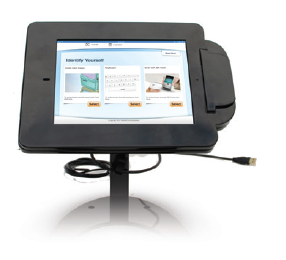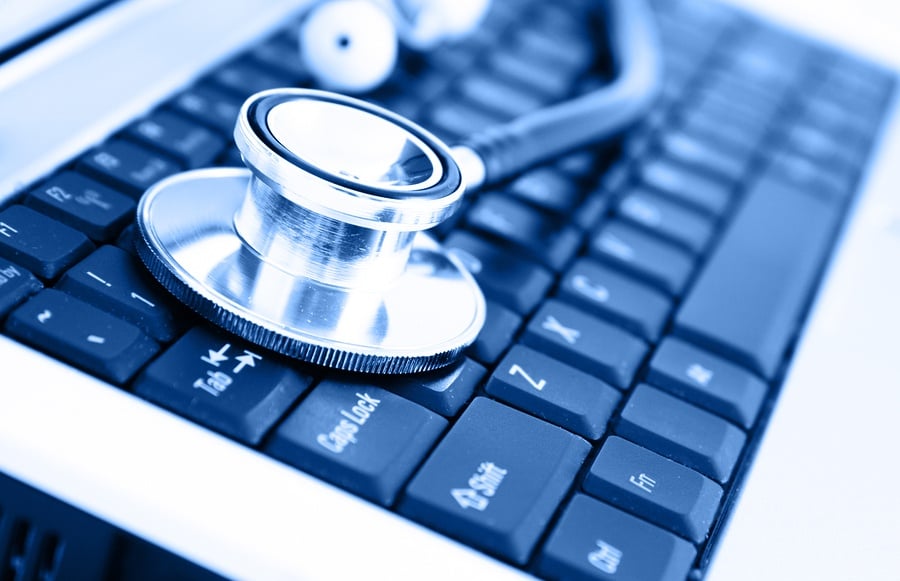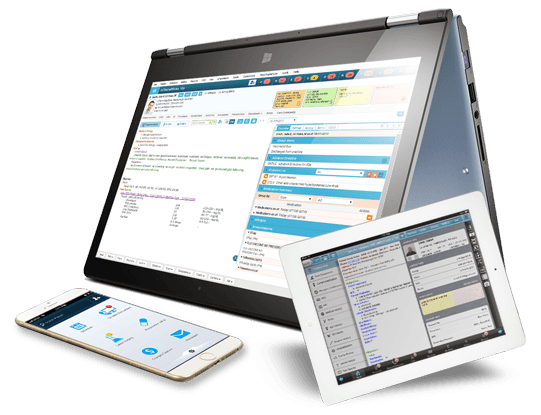For Dr. Harvey Benovitz, who graduated from medical school in 1962, it is as profound a shift in the way he treats patients as advances in diabetes drugs.
Instead of jotting down notes on charts and filling out prescriptions in his small, meticulous handwriting, Dr. Benovitz, whose patients have always thought of him as a reassuringly old-fashioned internist, tapped a patient’s blood pressure and other vitals into a laptop next to the examining table during a checkup the other day.
Not only will this new electronic record-keeping system eliminate the rows upon rows of bursting manila folders stuffed into what could be another examination room in the back of Dr. Benovitz’s cramped office on the Upper West Side. It allows him to compare the patient’s blood pressure management with all his other patients’ — and with those in hundreds of private medical practices across New York City.
Dr. Benovitz is among about 1,000 primary-care physicians who have given up their doctor’s pens over the past year to collect the smallest details of their patients’ lives in a database as part of a $60 million city health department project.
Experts say it is the most ambitious government effort nationwide to harness electronic data for public-health goals like monitoring disease frequency, cancer screening and substance abuse. It follows the Bloomberg administration’s aggressive focus on everyday health concerns — which has included startling anti-smoking advertisements in subways and requirements that chain restaurants post calorie counts — and frequent use of statistics to drive public policy on crime, homelessness and other issues.
And echoing the city’s cash-incentive experiments in the school system, the health department will soon start offering doctors bonuses of perhaps $100 for each patient who hits specified targets like controlling blood pressure or cholesterol, up to $20,000 for each doctor.
In April, the city will begin sending participating doctors report cards on how their preventive efforts compare to their peers’ (only the individual doctor being rated will be named, and the rankings will not be public). A prototype was used in 2007 to send electronic messages warning physicians in the Bronx of an outbreak of Legionnaires’ disease. And the city is currently using the system to track the spread of flu infection in New York City in real time — a much more accurate gauge, doctors say, than a Web tool being developed by Google.
Health maintenance organizations, clinics and hospitals here and elsewhere already use electronic records to communicate; Kaiser Permanente, the giant California H.M.O., has a system much like New York’s. Perhaps the one most similar to New York’s initiative is a demonstration project of the Massachusetts eHealth Collaborative that links doctors in three small suburban and rural communities.
But New York is trying to connect the vast majority of medical practices, which have 10 or fewer doctors, particularly in poorer neighborhoods, in hopes that providing them access to a broader base of patient information — and ranking their performance against their peers — will help them make strides in preventive medicine. The health department is providing subsidies for doctors to subscribe to the system and teams of trainers to support the transition; so far, more than 1 in 10 of the city’s estimated 10,000 primary-care doctors have started using the system, and an additional 500 are in the pipeline.
“We know that at these fancy schmancy systems, they can do these things. But here in New York, we’re trying to do this for the storefront in Harlem,” said Dr. Farzad Mostashari, a health department epidemiologist who is spearheading the New York effort. “As of now, about 2 percent of solo and small practices have electronic health records. This is really hard stuff to do. We have boots on the ground.”
Dr. Mostashari said New York’s system had already attracted interest from President-elect Barack Obama’s transition team; Mr. Obama pledged during his campaign to spend $50 billion over five years on electronic health records.
The system, custom-designed for New York by a Massachusetts company, eClinicalWorks, would cost a typical doctor’s office $45,000 to implement, but city subsidies reduce that to $24,000 for practices with at least 10 percent of their patients on Medicaid or uninsured; those in neighborhoods with the highest poverty rate pay $10,000. The health department is also putting together groups of doctors to share services like calling or sending text messages to patients to remind them of follow-up visits.
The health department has marketed the program most aggressively in three of the city’s poorest areas — Harlem, the South Bronx and central Brooklyn — sending employees to visit every doctor’s office in an effort to enroll them.
Particularly for less experienced doctors, the system provides what Dr. Jesse Singer, a health department records expert, described as CliffsNotes-style advice on how to handle medical problems based on a patient’s age, sex, ethnic background and medical history. It prompts doctors to provide routine tests and vaccinations, advises them on appropriate treatment and medication for certain conditions, and warns of potentially dangerous drug interactions.
To demonstrate, Dr. Singer created a fictional case of a 66-year-old woman with diabetes and a blood pressure of 145/90. The system flagged her blood pressure as too high and offered a pop-up box recommending treatment options. Dr. Singer could then fill out an electronic prescription, which could be printed or transmitted automatically to participating pharmacies.
Two or three weeks later, the data system would prompt the doctor to check whether the patient had filled the prescription, providing boxes to record “compliant” or “noncompliant.” Later, at a glance, doctors can look at how their overall patient base or certain groups are doing on measures like filling prescriptions — studies show that up to 50 percent of all prescriptions are not filled.
The system of tracking issues like diet and medication can be overridden if, for instance, a diabetic patient’s husband is sick and the doctor gives her permission to eat ice cream with him. The software designers found that doctors get annoyed by too many pop-up boxes, and has tried to give them the ability to suppress features they do not like. But, Dr. Singer said, “We can tell if the doctor clicks ‘never mind’ for every patient.”
Last week, Vicky Gianoukakis pored over billing records at Twilight Medical in Washington Heights, the practice that her husband, Nicholas Gianoukakis — Dr. Nick to his patients — started earlier this year. Two employees from the health department were on hand to troubleshoot.
When a patient did not have money for a co-pay, the computer flashed a tiny red flag that would pop up as a reminder the next time that patient came in. A different alert came up when an insurance company declined coverage of a physical.
Dr. Gianoukakis is one of five doctors in the city so far who have agreed to allow patients to use the data system from their home computers. They can request appointments electronically, check lab results or chart how well they are doing in, for instance, controlling cholesterol, blood pressure or blood sugar.
“It’s their records,” Ms. Gianoukakis said. “Shouldn’t they know what’s going on?”
Many in the medical world have long chafed at the notion that patients should not see their charts, and city health officials see the interactivity as a potentially powerful tool to push patients to take more responsibility for their well-being. Just seeing a readout of their vitals at various intervals could help, Dr. Singer said.
Dr. Gianoukakis is still wrestling with some of the particulars: He is inclined to continue delivering bad news in person, for example, even if routine results come across by electronic message.
One of the city’s goals is for the data system to serve as both incentive and support for doctors increasing their focus on what the health commissioner, Dr.
Thomas R. Frieden, calls the ABCS of preventive medicine: Aspirin (to prevent heart attacks), Blood pressure, Cholesterol and Smoking.
Right now, Dr. Frieden said, health care is too much like shoe shopping: If you go to the office (or store), someone will ask, “May I help you?” But if you do not go, all too often no one will notice.
As for Dr. Benovitz, he said that if the city had not recruited him, he would still be using paper charts, which had a comforting tangibility, a record of life that could be held in his hand and paged through like a book. But he was happy to invest the roughly $40,000 over three years to implement the project in exchange for the city’s expert advice, though it has temporarily slowed him down, with two patients filling the time in which he used to see three.
“I think it should improve quality of care,” he said of the city’s data mining, noting that “there are so many assumptions we have that are later disproven.”
And he is not afraid of being ranked: “Being told that I am subpar in a given area can only improve my performance, which is fine.”
New York Times
December 30, 2008
By ANEMONA HARTOCOLLIS








